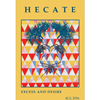AustLit
-
The linguistic term "feminism" is a slippery and malleable entity. In “Publicising Feminism”, the etymology of "feminism" is examined to illustrate how its linguist flexibility is displacing its intended meaning. Feminism's origin lies in the visible manifestations of women's activism during the Women's Liberation Movement. “Publicising Feminism” explores the significance of the term “feminism” for contemporary women’s liberationists. She pinpoints that this disassociation of meaning is being influenced by a dominance of patriarchy theory over the original class theory. Thus, “liberal feminism”, as the increasingly publicised and accepted version of feminism, has replaced its originating tie to the history of the women’s liberation movement.
“Publicising Feminism” draws upon several feminist writers and feminist theories to discuss how the notion of feminism has changed and disengaged from its original meaning to become a multi-faceted term. Ferrier argues that the original socio-historical movement of feminism was a part of a leftward political shift that centred upon socialist and Marxist ideologies about the capitalist system and its effect on women. Ferrier asserts that during the 1990s, feminism oriented itself through gender-centric perspectives, a scope that today, in contemporary Australia, still constrains feminism’s earlier highly-subversive meanings.
Ferrier cites Sandra Bloodworth’s critique of Heidi Hartmann’s work, which vindicates capitalism as a secondary determinant of patriarchy. For Ferrier, this politically conservative shift creates a fragmentation of contemporary feminism that has created a plurality of feminisms rather than one synergistic term. Ferrier highlights the distinctions and interdependencies between the currents of feminist theory and critique. She establishes that these currents transform feminism into a malleable term, with varying connotations. Namely, Ferrier notes how liberal feminism is again being widely-recognised as mainstream feminism, as it once was in the 19th century, and has become more dominant. Whereas, socialist and radical feminism are losing their hold and meaning in Australia's socio-literary platform (116). Through her analysis, Ferrier posits the correlative effect of these varying terms of feminism, explaining that each holds their own socio-historical objectives. Furthermore, Ferrier acknowledges that to answer questions pertaining to the economic and class structures of gender dichotomies and how to diminish them, an analysis of the complex-layers of feminism must occur.
Ferrier begins by asking “what does feminism mean now?”, and advocates that we may find the answer in allying feminism with its women’s liberation current—a class-centric lens that holds meaning for women’s liberationists and for women who are still a part of a class "minority": those who lie beyond the established middle-class, white, educated female stereotype. Ferrier reflects on how the change in cultural attitudes towards Marxist theory and class theory has affected the way women believe liberation can be achieved. Specifically, the push for women to withdraw from female labour as the pathway to achieving liberation highlights the dominant tendencies within mainstream feminism of the 1990s. Similarly, Ferrier emphasises how writers such as Heidi Hartmann believe that “patriarchy is more important than capitalism” and advocate that the main problem of female oppression lies in the idea of “men" (117).
Ferrier distinguishes between political and cultural feminisms. Following Marxist theory, Ferrier asserts that the struggle to discard capitalist regimes is part of the struggle for women’s liberation, and only “when they are rid of it will liberation be possible” (118). Ferrier aligns her position with the ideologies of women’s liberationists and their earlier strongly-socialist positions.
As Ferrier points out, this cultural shift and classism was contentious during the early 1900s. She draws a historical parallel with Sylvia Pankhurst—daughter of Dame Christabel Pankhurst a British suffragette who co-founded the Women's Social and Political Union—who contested her mother’s politics, and her extreme elitism in arguing that “a working women’s movement was of no value; working women were the weakest portion of the sex” (120). Likewise, Ferrier is concerned with how this Western, white elitism undermines the radical potential of feminism.
Ferrier contends that contemporary “feminist politics is much more preoccupied with difference between the oppressed than with anything that might unite them in struggle around a common interest” (122). Furthermore, she notes that feminism’s inadequacies lie with its lack of critical scrutiny concerning race, its focus on becoming more respectable and accepted, and its silence on lesbianism.
Ferrier concludes on a note of hope, suggesting:
Some feminists and some feminism may be in some ways entering the mainstream but to remain effective we will have to refuse the construction of women’s liberationists as “nice good middle class girls”, refuse to be incorporated within institutions, despite the rewards that might be offered to a few of us. If we want women’s liberation, we will have to demand to reclaim the disreputable stereotype along with all the others who are still disreputable because they still continue to challenge the institutions, challenge the system – Blacks, Migrants, gays and lesbians, and workers – and also ally ourselves with them in their struggles. (122)
Modern Australia is heavily intertwined with capitalist ideology and right-centred politics, yet, since the 1990s another shift has occurred that is a by-product of open interaction between feminist identities. Although feminism may still be a multi-faceted term, it now has platforms that enable it to interact widely with facets of race, sexuality, and class to promote a more dynamic whole. Although the term feminism remains slippery, changeable, and flexible, it must be united with its historical significance for it to regain its meaning and fighting for equity for all women in different locations in the world. This continues to be advocated in Hecate’s current publishing practice.
You might be interested in...




